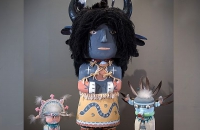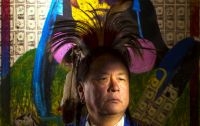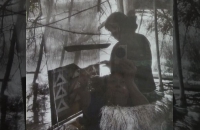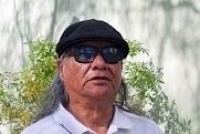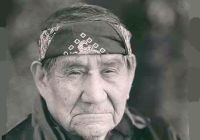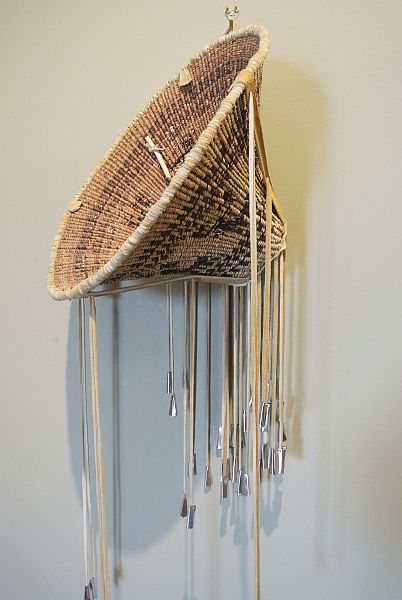
Apache Baskets
The Apache have a long history of basket-making, and it is one of the most celebrated art forms in their culture. In the past they created many types of baskets, including trays, ollas, bowls and burden baskets, and used these in all aspects of daily life. The most common style of Apache basket today is the burden basket, a cone-shaped basket with a flat or round bottom. Usually, the rim of the basket is wrapped in buckskin and strips of buckskin with tin tips hang from the basket’s body. Most also come with a carry strap. Historically, the Apache were nomadic hunters and gatherers, the women wove these baskets to carry firewood, roots and berries, and burden baskets were an efficient tool for collecting and carrying food.
Burden baskets are made from all-natural fibers, including devil’s claw (black/dark brown; used in design), willow (whitish originally, aged to a golden tan /light brown in most all early examples) and yucca root (used sparingly in a small percentage of Apache baskets; brick red in color), and an artist constructs them by wrapping fibers around a central core of plant fiber. Being on a three rod foundation makes the baskets tight, stiff and sturdy with no bend to them, and yields rounded well-defined coils that stand out. Most feature beautiful designs including geometric forms, animal motifs or cultural symbols. The tassels were made from deer or cow skin, mainly for ceremonial or decorative uses.
Two of the theories why the "tinkling" tin was placed on the tassels are: to warn snakes away while gathering, or for a son-in-law to show respect by getting out of his mother-in-law's way! Today, burden baskets are made to be enjoyed in the home and are also used in some Apache ceremonies.
While coarse twined burden baskets are still woven today, Apache fine coiled willow basketry on the three rod foundation died with the Great Depression of the 1930's. A number of influences converged at this time. Tourism to the Southwest slowed. The basket collectors market dropped off as wealthy collectors bought up existing collections of basketry from "less liquid" collectors. By the late 19th century the Industrial Revolution had produced cheap pots and pans so labor intensive basketry was no longer practical or necessary culturally so most baskets made during the 1880-1930 era were made for resale. Apache children were sent to government schools and discouraged from traditional weaving.
An art form perfected over thousands of years was lost in a decade as weavers took up new lines of work. Generally, only the relatively quickly made open weave single rod burden baskets continued to be made for the tourist industry. When the economy and interest in basket collecting returned after World War II, fine three-rod coiled basketry had disappeared; there was no economic incentive to spend months weaving fine basketry in the new inflationary economy. Modern examples usually use commercial leather and are woven in a larger weave than the pre-1930 examples. The willow on new examples can be almost white in color while the willow in the older baskets ages to a golden tan or darker color. Unlike trays, bowls and olla forms Apache burden baskets are woven in a twining style rather than coiling.


